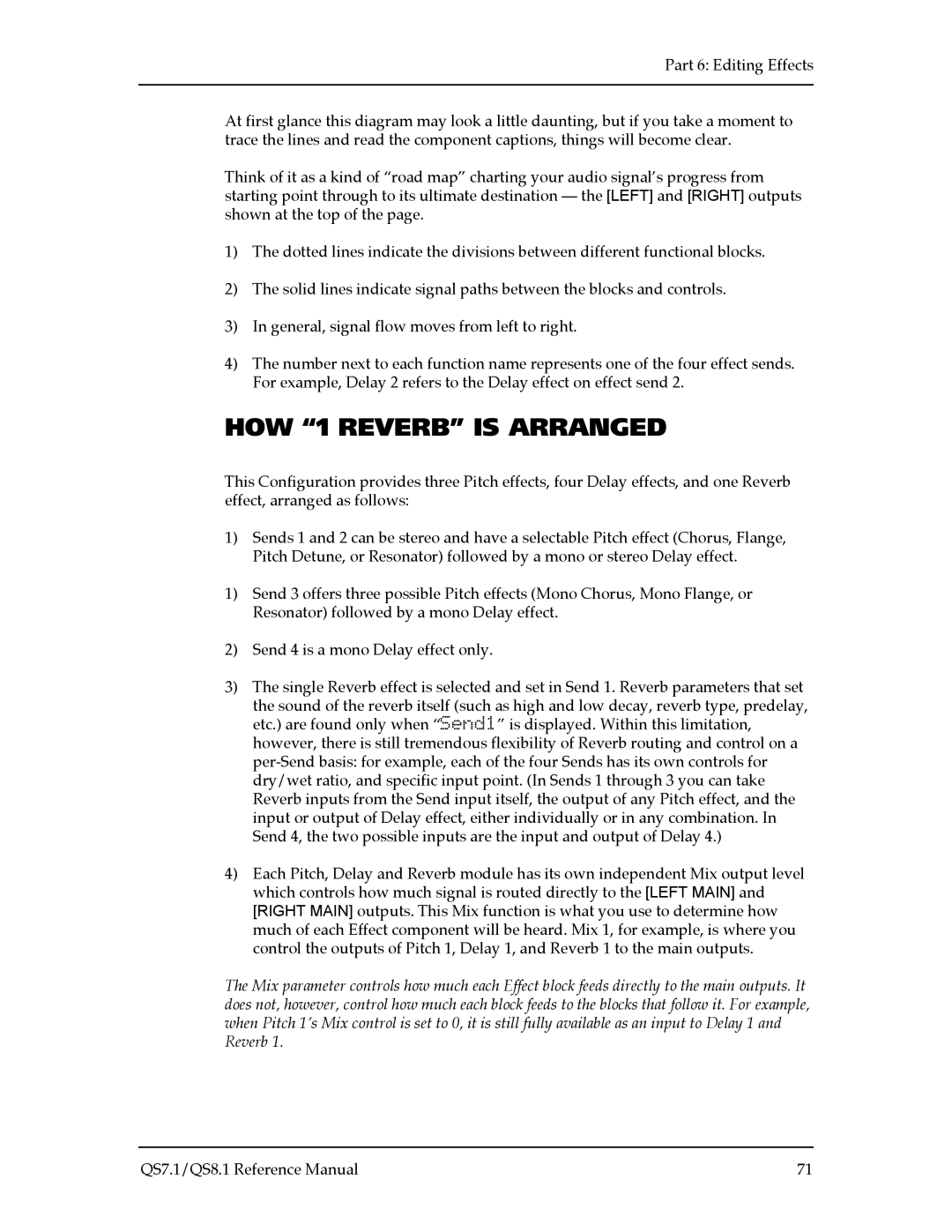
Part 6: Editing Effects
At first glance this diagram may look a little daunting, but if you take a moment to trace the lines and read the component captions, things will become clear.
Think of it as a kind of “road map” charting your audio signal’s progress from starting point through to its ultimate destination — the [LEFT] and [RIGHT] outputs shown at the top of the page.
1)The dotted lines indicate the divisions between different functional blocks.
2)The solid lines indicate signal paths between the blocks and controls.
3)In general, signal flow moves from left to right.
4)The number next to each function name represents one of the four effect sends. For example, Delay 2 refers to the Delay effect on effect send 2.
HOW “1 REVERB” IS ARRANGED
This Configuration provides three Pitch effects, four Delay effects, and one Reverb effect, arranged as follows:
1)Sends 1 and 2 can be stereo and have a selectable Pitch effect (Chorus, Flange, Pitch Detune, or Resonator) followed by a mono or stereo Delay effect.
1)Send 3 offers three possible Pitch effects (Mono Chorus, Mono Flange, or Resonator) followed by a mono Delay effect.
2)Send 4 is a mono Delay effect only.
3)The single Reverb effect is selected and set in Send 1. Reverb parameters that set the sound of the reverb itself (such as high and low decay, reverb type, predelay, etc.) are found only when “Send1” is displayed. Within this limitation, however, there is still tremendous flexibility of Reverb routing and control on a
4)Each Pitch, Delay and Reverb module has its own independent Mix output level which controls how much signal is routed directly to the [LEFT MAIN] and [RIGHT MAIN] outputs. This Mix function is what you use to determine how much of each Effect component will be heard. Mix 1, for example, is where you control the outputs of Pitch 1, Delay 1, and Reverb 1 to the main outputs.
The Mix parameter controls how much each Effect block feeds directly to the main outputs. It does not, however, control how much each block feeds to the blocks that follow it. For example, when Pitch 1’s Mix control is set to 0, it is still fully available as an input to Delay 1 and Reverb 1.
QS7.1/QS8.1 Reference Manual | 71 |
